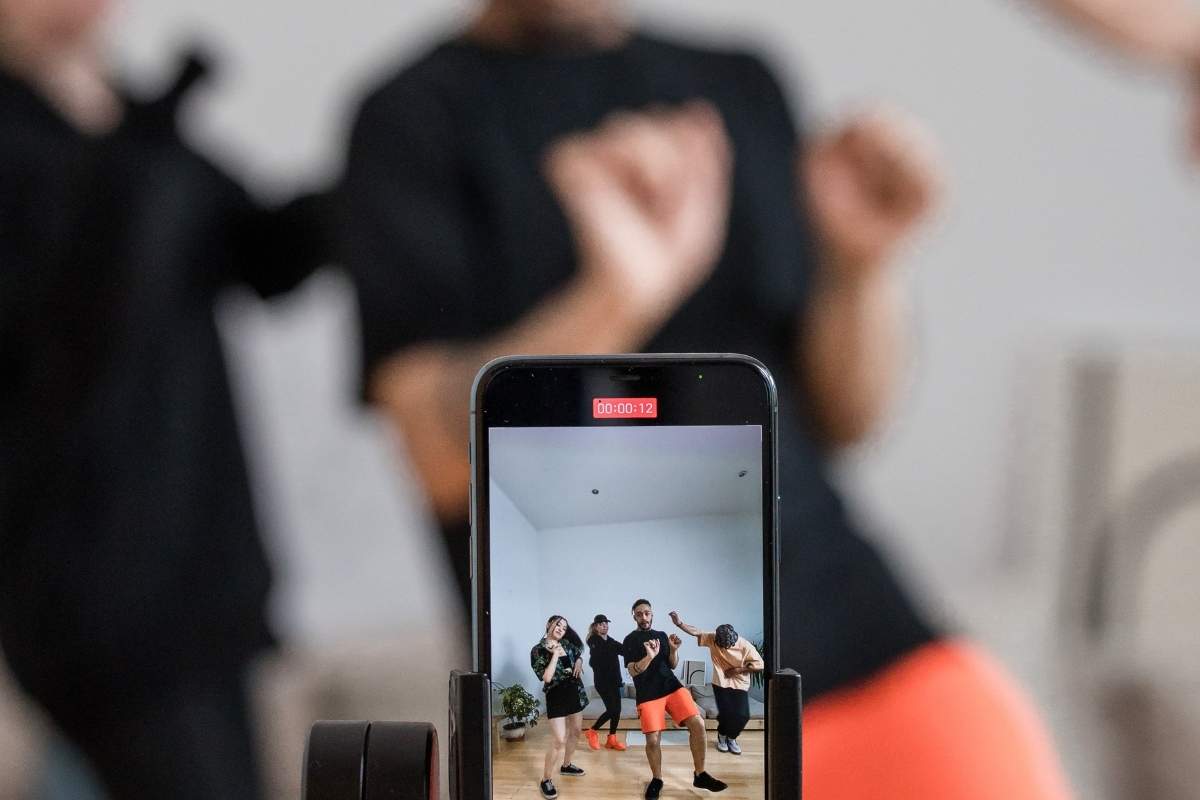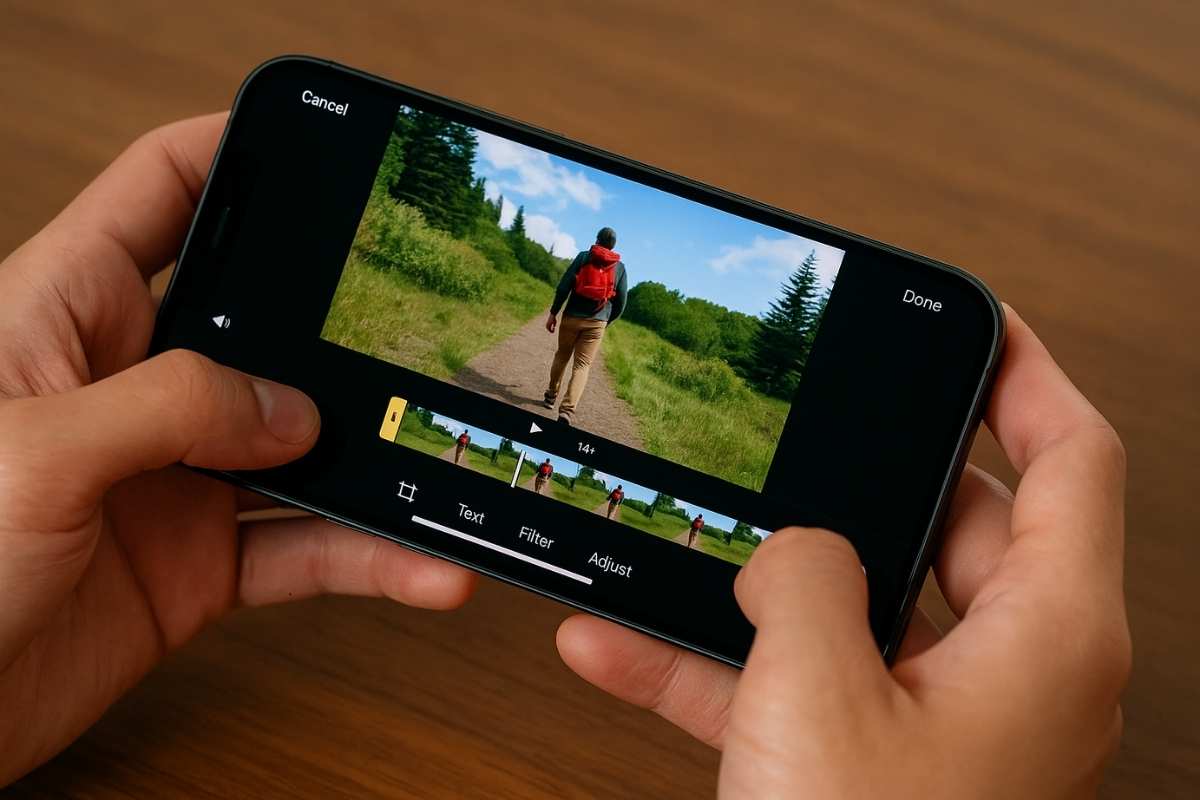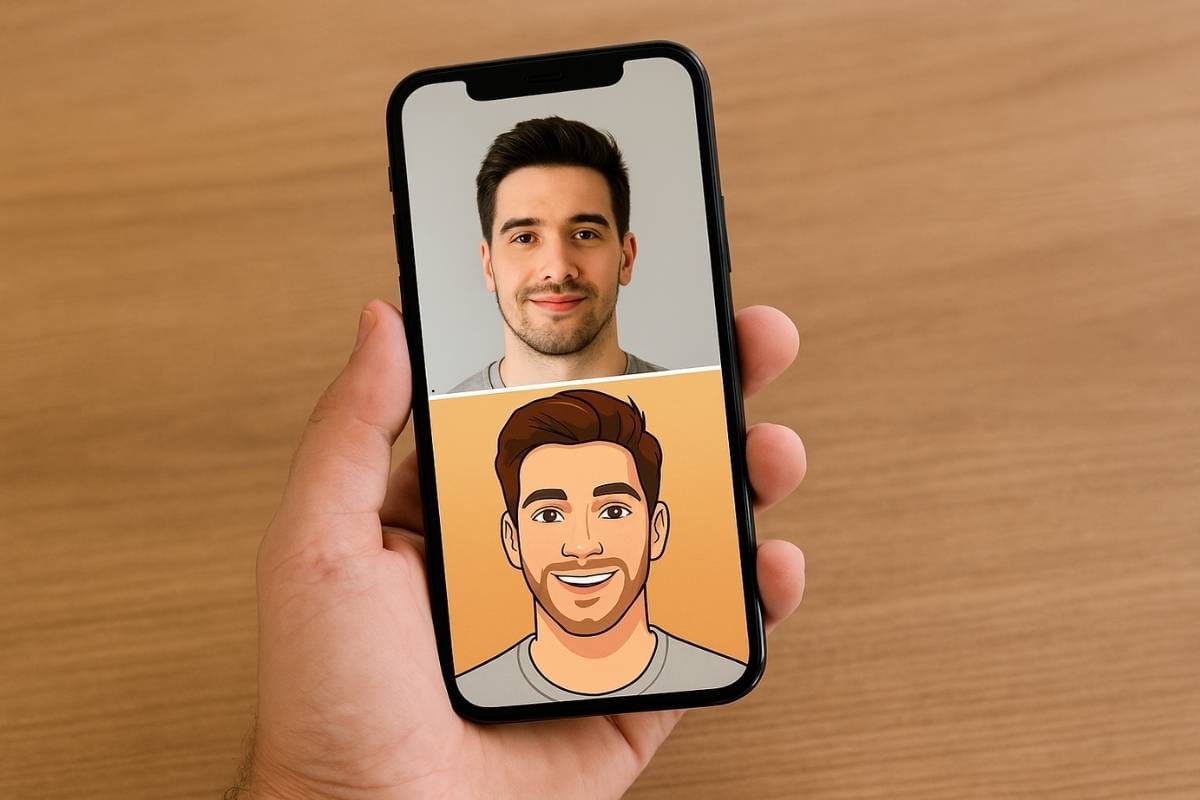17 Best Video Editing Software for YouTube in 2026
If you want to grow on YouTube, you already know editing takes a lot of time.
And it gets even harder when you’re trying to mix clips, fix audio, add titles, and then export everything in a clean 1080p or 4K file… all without your laptop lagging like crazy.
So I wanted to put together a list of software that actually makes YouTube editing easier — tools that people really use, not those random ones you see in outdated guides, you know.
These are the editors that help you cut long videos, add B-roll, color grade, create thumbnails, and just keep your whole workflow smooth.
Some are free, some are premium, but all of them are good for YouTube in their own way.
So, yeah, let’s go through them one by one so you can pick the one that fits the way you edit.
1. Adobe Premiere Pro
Why I Picked It: it’s the software most YouTubers rely on when they want full control over their edits.
If you’re someone who likes to really sit with your footage and shape it the way you want, Premiere Pro just gives you that kind of space.
You get a proper multi-track timeline, so you can drop your A-roll, add B-roll on top, throw in some text, fix your audio, and do all that without feeling limited.
And, honestly, the best part is how well it handles long videos.
You can do 10–20 minute YouTube edits pretty smoothly, especially if your laptop can handle it.
It also has built-in color tools, nice audio cleanup, motion controls, and easy 1080p/4K export presets.
So yeah, for anyone who wants a proper creator setup, this is one of those tools you grow into.
It just gives you a lot of freedom when you’re editing.
Also Read: 16 Best Mobile Video Editing Apps for YouTube
2. Final Cut Pro
Why I Picked It: it’s the smoothest, fastest YouTube editing software for Mac users, especially for longer videos.
If you’re on a Mac, this is the one that just feels… easy.
You drop your clips in, you move things around, and the whole timeline responds in a really clean way.
It doesn’t lag much, even when you’re working with 4K footage, which is why so many YouTubers who use Mac stick with it for years.
The magnetic timeline takes a day or two to get used to, but once you get the feel of it, you cut way faster.
You can stack B-roll, add transitions, color grade your clips, fix shaky shots, and export everything without your system heating up too much.
It also has really nice text tools for intros and lower thirds, and the rendering speed on MacBooks is honestly one of the best parts.
So yeah, if you’re editing on macOS and you want something that just stays fast while you work, this is a really solid pick.
Also Read: 17 Best Free Video Editors You Should Try
3. DaVinci Resolve
Why I Picked It: it gives you pro-level color grading and editing tools for completely free, which is crazy for YouTube creators.
If you’re someone who wants your YouTube videos to look a bit more polished, maybe with cleaner colors or that slightly “cinematic” feel, Resolve is the one that helps you do that without spending money.
The timeline is solid, the trimming feels smooth, and you can stack clips, add transitions, drop in music, and do all that normal editing stuff.
But the thing that really makes it stand out is the color page.
You can fix dull shots, brighten faces, match different clips, or just make your entire video look more consistent.
It also has a strong audio panel where you can reduce noise or balance vocals easily.
And yeah, it can be a little heavy on low-end laptops, but once it runs well, it really opens up what you can do.
For YouTube creators who want more control without paying for a subscription, this software is honestly a gift.
Also Read: 15 Best Vlog Editing Apps You Should Use
4. VEGAS Pro
Why I Picked It: it’s one of those editors that just feels simple to learn but still powerful enough for full YouTube workflows.
VEGAS Pro has this very straight-to-the-point timeline that a lot of creators like because you don’t really fight with the software.
You drag your clips in, cut them, add transitions, drop text, fix your audio, and everything happens in a pretty smooth way.
It’s especially good if you make talking-head videos, tutorials, or vlogs because the editing flow is fast — you can trim and move clips around without too many steps.
It also handles effects, slow motion, chroma key, and color tweaks without making the whole project feel heavy.
Rendering is quick too, and the layout is clean, so you don’t get overwhelmed with too many panels on your screen.
If you want something that gives you a good mix of power and ease, and you don’t want to spend weeks learning the software, VEGAS Pro fits really well for YouTube editing.
Also Read: 16 Best Video Editors Without Watermark You Should Try
5. Avid Media Composer
Why I Picked It: it’s the kind of software you choose when you want rock-solid stability for long YouTube videos.
Avid is mainly known for big films and TV shows, but a lot of YouTubers who make long, detailed videos also use it because it just stays stable even when your project has tons of clips.
If you’re editing 20–40 minute videos, or you have a lot of layers like B-roll, music, sound effects, and text, this thing barely crashes.
The timeline feels a bit old-school at first, but once you get the hang of it, the trimming and cutting become very clean and controlled.
It’s great for creators who like a slow, careful workflow where every cut feels intentional.
It also has strong audio tools, which helps a lot if you record voiceovers or podcast-style content.
And yeah, it’s not the flashy YouTube editor, but if you want something solid that handles long edits without slowing down your computer, Avid is actually a really dependable option.
Also Read: 14 Best Video Editing Apps for Instagram Reels
6. Wondershare Filmora
Why I Picked It: it’s the easiest YouTube editing software for beginners who still want their videos to look clean and put-together.
Filmora is one of those tools you open and you kind of get it right away.
The timeline is simple, the buttons are easy to understand, and you don’t feel lost even if you’ve never edited before.
You can trim clips, add transitions, drop text, fix your audio, and even color-correct without going through ten different menus.
What I like most is that it has a lot of ready-made effects and presets, so if you want your videos to look a little nicer without spending hours on editing, Filmora really helps with that.
It also exports pretty fast, and the YouTube presets make it easy to get your video in the right size and quality.
So yeah, if you’re just starting your channel or you’re someone who wants simple editing without all the complicated stuff, Filmora is a very solid pick.
7. Movavi Video Editor
Why I Picked It: it’s super beginner-friendly and gives you all the basic tools you need for YouTube without making things confusing.
Movavi is one of those editors that just feels light, you know.
You open it, drag your clips in, and everything is right there — trimming, splitting, transitions, text, filters, audio tools… all in a clean layout.
It’s perfect if you make YouTube videos that are simple, but you still want them to look neat.
The timeline is responsive, you can stack B-roll without any drama, and the color correction tools are very straightforward.
Nothing feels complicated, which is why a lot of new creators end up sticking with Movavi for years.
It also has some nice extras like auto captions, quick templates for intros, and background noise removal, which saves a lot of time.
And yeah, it exports pretty quickly, even on average laptops.
If you want a smooth editing experience without learning something heavy, Movavi makes the whole YouTube workflow easier.
8. CyberLink PowerDirector
Why I Picked It: it gives you a good mix of beginner-friendly tools and more advanced features without feeling heavy.
PowerDirector is one of those editors that works well for YouTubers who want a bit more control but still want the software to stay simple.
The timeline feels smooth, you can drop multiple layers of B-roll, add motion effects, clean up your audio, and even do stabilizing when your footage is shaky.
It also has some really handy presets for titles, transitions, and color looks, so you don’t have to build everything from scratch.
And the built-in speed controls are great if you make tutorials or travel videos.
Rendering is fast, especially on Windows laptops, and the layout doesn’t overwhelm you with too many panels.
You get enough power to take your YouTube videos up a level, but the workflow stays easy.
If you want something that sits right between simple and pro, this one fits really well.
Also Read: 17 Best Video Editing Apps Every Pro Secretly Uses
9. Kdenlive
Why I Picked It: it’s a powerful, free editor that gives you pro-level tools without making your laptop cry.
Kdenlive is one of those editors that surprises you because it doesn’t look complicated, but once you start editing, you realise how much control you get.
The timeline feels smooth, you can stack a lot of layers, drop in B-roll, add text animations, fix your audio, do color grading, and even use motion tracking.
It runs well on Windows, macOS, and Linux, which is why so many creators use it for YouTube.
The interface is clean, nothing feels hidden, and you don’t need a high-end machine for normal 1080p or 4K editing.
There are tons of ready-made effects, transitions, and color presets you can apply quickly when you want your videos to look neat without spending hours.
And the best part… It’s fully free with no annoying watermarks or locked features.
If you want a serious editor without paying anything, Kdenlive is honestly the strongest pick out there.
10. Lightworks
Why I Picked It: it’s a lightweight editor that still gives you a clean, professional workflow for YouTube without stressing your laptop too much.
Lightworks feels a bit different when you first open it, but once you get used to the layout, it becomes a very steady editor for longer YouTube videos.
The trimming tools are sharp, the timeline responds well, and you can handle multi-track projects without any big lag issues.
It’s great for creators who want a proper editing environment but don’t want something as heavy as Premiere Pro or DaVinci.
You can drop in your A-roll, add B-roll layers, adjust your audio, add transitions, throw in titles, and it all stays pretty smooth.
Exporting is simple, the color panel is decent, and the free version is actually good enough for most YouTube work.
If you like editing with a bit more control but still want your laptop to breathe, Lightworks gives you a solid middle ground.
11. Shotcut
Why I Picked It: it’s a completely free, open-source editor that still gives you a clean timeline and enough tools for solid YouTube videos.
Shotcut is one of those editors that doesn’t look fancy at first, but once you start using it, you realise it actually does most of the things you need for YouTube.
The timeline is simple, you can add multiple layers, trim clips, add filters, fix your audio, and even do basic color grading.
Everything feels straightforward — no locked features, no watermarks, nothing like that.
It runs well on normal laptops too, so you don’t need some high-end setup just to edit a 10–15 minute video.
You also get a good set of transitions, text tools, and export settings that work fine for 1080p or 4K uploads.
It’s the kind of software you pick when you want something honest and reliable without spending money.
For creators who want clean edits without all the heavy stuff, Shotcut is actually a really good option.
Also Read: 17 Best YouTube Thumbnail Editing Apps That’ll Get You More Clicks
12. VSDC Free Video Editor
Why I Picked It: it’s one of the strongest free editors for Windows users who want more control without paying for anything.
VSDC looks a little technical when you first open it, but once you start dropping clips on the timeline, things actually make sense.
You can stack videos, add text, mix in music, do picture-in-picture, and even add motion effects.
It’s pretty powerful for something that doesn’t cost money.
The color tools are nice, the audio controls work well, and you get features like masking and chroma key that many free editors don’t even offer.
It’s great for YouTubers who want more than basic trimming but don’t want to jump into something heavy like Premiere Pro.
Rendering is decent, and the software doesn’t crash too often once you get used to the workflow.
If you’re on Windows and you want a free editor that actually gives you room to grow, VSDC is one of the best picks out there.
13. OpenShot
Why I Picked It: it’s a super simple, open-source editor that helps beginners cut YouTube videos without getting confused by too many buttons.
OpenShot is one of those editors you pick when you just want a clean place to trim your clips, drop in music, add a bit of text, and export your video without learning anything complicated.
The layout is very basic — a timeline at the bottom, your preview on the side, and everything else stays pretty easy to reach.
You can stack a few layers, fix your audio, add transitions, and do simple color adjustments.
Nothing feels overwhelming, which is why a lot of new YouTubers start with it before moving to something advanced later.
It also runs well on low-spec laptops, so if your system heats up with heavy editors, OpenShot gives you a smoother experience.
It won’t give you super advanced effects, but for clean and simple YouTube edits, it does the job really well.
14. Clipchamp
Why I Picked It: it’s a clean, beginner-friendly editor for Windows users who want quick YouTube edits without downloading heavy software.
Clipchamp feels very light when you use it.
You just drop your clips in, trim them, add your music, put some text on top, and the whole thing stays smooth even on basic laptops.
Since it’s made by Microsoft now, it works really well on Windows machines — especially if you don’t want to deal with complicated panels and menus.
The timeline is simple, the controls make sense, and you get a bunch of built-in templates if you like those quick intros or lower-thirds styles.
It’s great for YouTube creators who want to edit talking-head videos, tutorials, or simple vlogs without learning something heavy like Premiere or DaVinci.
The export options are easy too, and the 1080p preset works well for YouTube.
If you just want a clean, stress-free editor for everyday uploads, Clipchamp is honestly one of the easiest tools to start with.
15. iMovie
Why I Picked It: it’s the simplest free editor for Mac users who want clean YouTube videos without learning anything complicated.
iMovie is one of those tools that just works when you need it.
The layout is super clean, you drag your clips in, trim the parts you don’t need, add a bit of text, adjust your audio, and you’re basically done.
It’s perfect for YouTubers who make talking-head videos, tutorials, lifestyle vlogs, unboxings — anything that doesn’t need heavy effects.
The timeline feels smooth, you don’t get lost in too many panels, and everything responds nicely even on older MacBooks.
The built-in color tools are simple but good enough to fix dull clips, and the audio cleanup helps a lot if your room has a little echo.
Exporting is quick, and you get a clean 1080p or 4K file without messing with advanced settings.
If you’re on a Mac and you want an easy editor that keeps your workflow stress-free, iMovie is honestly perfect for that.
16. Descript
Why I Picked It: it’s the easiest software for YouTubers who want to edit by fixing the words, not the timeline.
Descript feels very different from normal editors, and that’s kind of the whole point.
When you drop your video in, it turns everything into text — like a transcript — and then you just edit your words the way you edit a document.
Delete a line, and that part of the video gets deleted. Move a sentence, and the clip moves with it.
It’s honestly one of the fastest ways to clean up talking-head videos, tutorials, podcasts, or any YouTube video where your voice is the main thing people listen to.
It also has tools like auto-captions, filler-word removal, noise cleanup, and even AI voice fixes, so your audio sounds cleaner without you doing much.
You can still use a timeline if you want, but most people stick to the text-based workflow because it saves so much time.
For creators who want speed more than fancy effects, Descript is perfect.
Also Read: 15 Best AI Video Editors You Should Try
17. Canva Video Editor
Why I Picked It: it’s the easiest browser-based editor for YouTubers who want clean videos, simple graphics, and quick layouts without installing anything.
Canva’s video editor is not a heavy editing tool like Premiere or Resolve, but that’s what makes it so useful for a lot of YouTube creators.
You open it in your browser, drop your clips in, trim the parts you don’t need, add clean text, adjust audio, and you’re basically done.
It’s perfect for lifestyle videos, voiceover videos, list-style videos, tutorials, and anything where you want your visuals to look neat without spending hours on the timeline.
The best part is the templates — intros, outros, lower thirds, transitions — all ready to use, so you don’t start with a blank screen.
It also handles stock footage, B-roll, and background music really well, which saves a lot of time if you don’t record much extra footage.
Exporting is simple, everything feels light, and you can work from any laptop.
For simple, aesthetic YouTube videos, Canva’s video editor fits in really nicely.
Final Thoughts
So yeah, these were the editors that actually make YouTube editing a bit easier.
And honestly, you don’t need the perfect software to start — you just need something that feels comfortable when you sit down with your clips.
Some creators love the full control in Premiere Pro, some want the smooth flow of Final Cut, and some just want a free tool like Kdenlive or DaVinci Resolve to get the job done without spending anything.
The main thing is finding something that matches your workflow, because once you get used to an editor, everything becomes faster — cutting, adding B-roll, fixing audio, all of it.
If your videos are simple, go for something light.
If you want more control, pick something powerful.
You’ll slowly understand what works best for your style, and once that happens, editing doesn’t feel like a long, stressful process anymore.
It becomes a part of your routine.
So just pick one, stick to it for a bit, and your YouTube workflow will get smoother with every video.
FAQs
What is the best video editing software for YouTube beginners?
Most beginners look for something easy to learn, light on the system, and simple to use. Tools like Filmora, Movavi, Clipchamp, and iMovie are usually the easiest places to start.
What software do YouTubers use to edit their videos?
Most creators use Premiere Pro, Final Cut Pro, DaVinci Resolve, or Filmora depending on their laptop and editing style.
What is the best free editing software for YouTube videos?
Kdenlive, DaVinci Resolve, Shotcut, VSDC, and OpenShot are the most popular free options that don’t add watermarks.
How do I edit YouTube videos on a low-end laptop?
Light editors like Clipchamp, OpenShot, Shotcut, and VSDC run better on basic laptops and handle 1080p projects smoothly.
What is the easiest software to edit YouTube videos?
Filmora, Movavi, iMovie, and Clipchamp are the easiest because the layout is simple and you don’t need any editing experience.
What’s the best software for editing YouTube vlogs?
Creators who film vlogs usually use Premiere Pro, Final Cut Pro, Filmora, or DaVinci Resolve because they handle long clips well.
How do I edit YouTube videos in 4K without lag?
You need software with good optimization like Final Cut Pro, DaVinci Resolve, or Kdenlive, plus a laptop that can handle 4K playback.
What is the best software for YouTube Shorts editing?
For desktop editing, Premiere Pro, DaVinci Resolve, and Filmora work really well for shorts because they support vertical presets and fast trimming.
What video editing software works best on Windows?
Windows creators often use Premiere Pro, DaVinci Resolve, Filmora, Movavi, PowerDirector, Clipchamp, and Kdenlive.
What’s the best video editing software for Mac users?
Final Cut Pro and iMovie are the smoothest on Mac, but Resolve and Filmora also run well.






